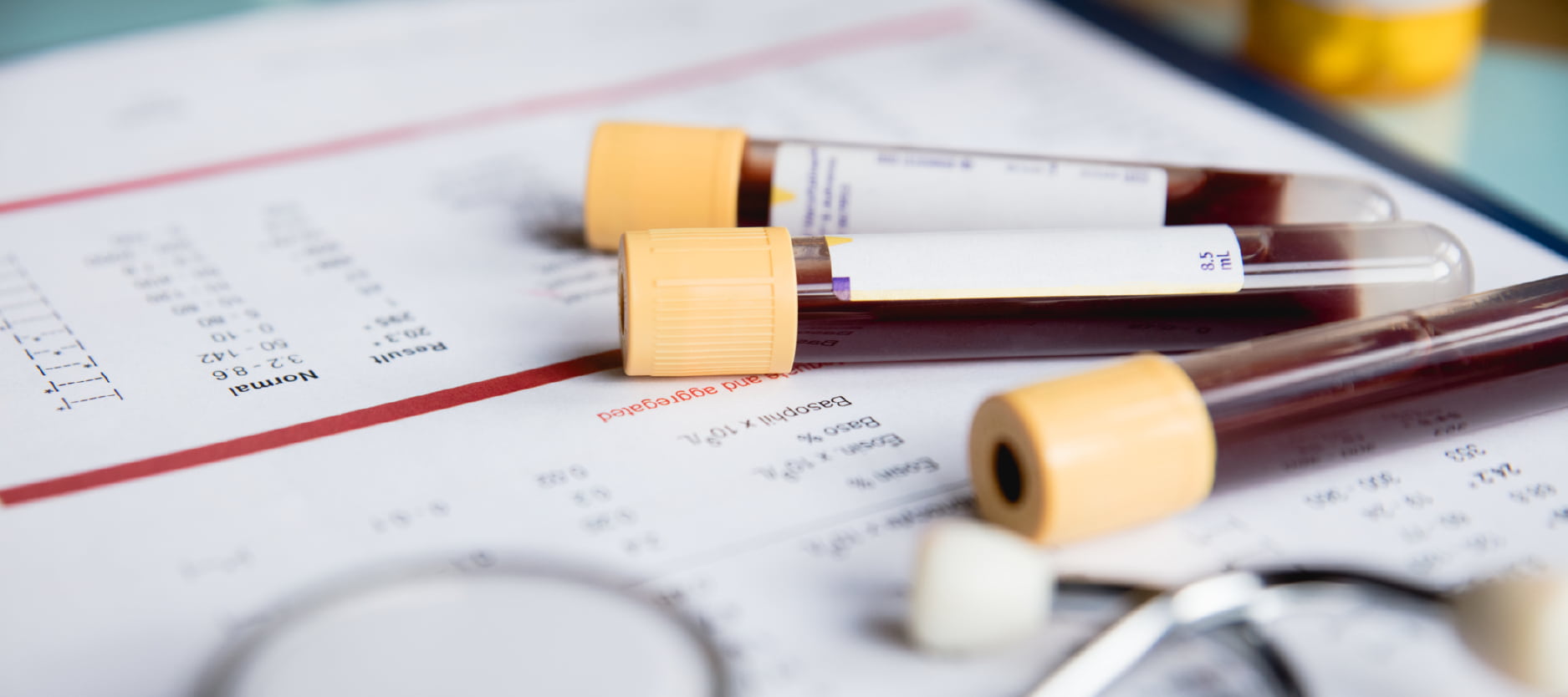COVID-19 recently overtook heart disease as the leading cause of death in the United States. That was big news. But in some ways, it’s missing the point.
Yes, the COVID-19 pandemic is serious. But I’d argue that heart disease is a pandemic in its own right—one that’s been around far longer, and that we should all be paying more attention to.
Heart disease has long been the leading cause of death in the US.
And it’s not going anywhere. After we’ve figured out how to cope with COVID-19, heart disease and its associated conditions, like stroke and diabetes, will still be waiting in the wings.
In just over a year of living with COVID-19, it has caused nearly 2.5 million deaths. That’s an undeniably devastating toll. But to put it in perspective, there were 18.6 million deaths globally that were related to cardiovascular disease in 2019. That’s 9 lives lost to heart disease for every 1 due to COVID-19. Add to that the disease burden of people living with the effects of heart disease, stroke, dementia, and Alzheimer’s (which has been unofficially termed type 3 diabetes for its relationship to type 1 and 2 diabetes), and the impact is more vast than many dare to imagine.
And yet, even if you add the coverage of all of these health issues together, they still aren’t getting as much attention as the COVID-19 pandemic.
From my perspective, there are two big reasons for this.
First, we often believe that as you get older, heart attacks and strokes are just a natural part of life that tend to happen without warning. The reality is, that's just not true anymore. The warning signs are there and we have the technology to find them. With proper screening and appropriate lifestyle changes, we can extend our lives for decades.
Second, most people don’t understand their risk for cardiometabolic disease. What’s more, many health care providers don’t connect the dots for patients to see how the most common health problems are interrelated.
Here’s what I mean by that: We know that heart disease is, in ordinary times, the leading cause of death in the US. At the same time, by the time we're 65 years old, nearly 50 percent of us have prediabetes. That percentage increases with each year of age.
This is a problem, because insulin resistance (the precursor to prediabetes) and prediabetes can cause plaque buildup in the arteries. Any tissue that relies on blood supply from an artery can be affected. That's why prediabetes causes issues with the heart, brain, kidneys, and eyes. From there, you can see why people with prediabetes and diabetes are at higher risk for heart disease and stroke. Research shows that people with prediabetes have a 20% increased chance of stroke and a 15% increased risk of heart disease.
Heart health and COVID-19
So how does COVID-19 fit into all of this? Because the virus has only been around for a year, there’s still a lot we don’t know about it. In terms of heart health, we don’t know exactly how often it affects the heart, why it affects the heart, or what the long-term prognosis is for people who experience heart problems related to COVID-19.
We do know the virus can cause inflammation of the muscle cells of the heart. We also know this effect isn’t very common, nor is it the predominant problem people experience with this virus. Instead, COVID-19 seems to more often affect the lungs.
Given all of this, what's the recommendation to look after your heart health in the age of COVID-19? It’s to focus on what we know are the most common causes. By far and away, the most common cause is insulin resistance, which again, can lead to prediabetes and diabetes over time and ultimately increase risk for heart disease.
But here’s the thing: While 1 in 3 Americans have insulin resistance, a staggering 90 percent of them don’t realize it.
The good news is that insulin resistance and prediabetes are detectable and reversible. With simple (though not always easy) lifestyle changes, you can stop them from getting worse. But as I tell my patients, you can't out-supplement, you can't out-prescribe, out-stent, or out-bypass a lifestyle problem.
With all of this in mind, here are five trends in the heart health arena that patients and providers alike should know about.
Trend #1: Standard screening methods for diabetes and prediabetes aren’t enough.
Now that we’ve covered the link between diabetes and heart health, you can probably see why earlier identification of insulin resistance, prediabetes, and diabetes is so important. Unfortunately, research shows that the average primary care physician's knowledge, attitude, and skill set for diagnosing and managing prediabetes is far from optimal.
Part of the issue is that for many people, the standard tests that are used to evaluate blood sugar and insulin problems aren’t sufficient in isolation. For example, it’s possible to have a normal A1c or fasting blood glucose test, and still have insulin resistance.
Many doctors will choose one of these tests and upon a normal result, give patients the good news that their blood sugar looks fine, so they don’t need to worry about diabetes. But in order to get a fuller picture of a person’s insulin and blood sugar status, more tests are required. In addition to a comprehensive baseline heart health panel to evaluate cholesterol, glucose, and inflammation levels, I recommend these additional screenings to my patients every year starting at age 40, and every 5 years up until then—unless you have have risk factors or a family history or obesity (which could mean you’d need screening more often before age 40).
Oral Glucose Tolerance Test (OGTT)
An OGTT is like an exam for your pancreas, and it reveals how well your body processes sugar. Most people hear about OGTTs when they know someone who has been pregnant and was tested for gestational diabetes. But these tests are invaluable for non-pregnant people too. The test involves taking a fasting blood glucose test, then drinking a beverage with 75mg of sugar. Two hours later, blood glucose is measured again to see how well the sugar was processed.
Insulin Resistance Testing
A 4-hour Kraft Insulin Survey is similar to an OGTT, but it also looks at the insulin levels in your blood. This test is the gold standard for detecting insulin resistance, but it’s rarely performed. I offer this test to my patients, as it shows how quickly your body can process sugar, and also provides insight into how much insulin you need in order to get the job done. Adding a screening for insulin resistance is really important, because many people have normal blood glucose levels, but are producing more insulin than is normal. It’s also worth noting that at-home testing options for insulin resistance screening are now available.
Continuous Glucose Monitoring
You can think of this like a speedometer for your blood sugar. Whereas most blood tests only offer a snapshot of what’s happening with your blood sugar at one moment in time, a wearable continuous glucose monitor can measure your glucose levels all day long. This can be particularly helpful because you’re able to understand how specific foods and meals impact your blood sugar. Glucose monitors can also provide a fuller picture of blood sugar fluctuations throughout the day, which reveals problems a standard blood test might miss.
To get a continuous glucose monitor, you’ll need a prescription from a doctor. Luckily, they are increasingly being offered in a tele-health setting.
Once you have the results of these tests, you can start managing your lifestyle accordingly.
Trend #2: Fat loss is more important than weight loss for reducing your disease risk.
You’ve probably heard that if you’re overweight, losing weight is one of the best things you can do for your heart health. But we need to be more specific about that: Losing fat tissue is one of the best things you can do for your heart health, if you have more than is considered healthy.
We used to think body fat was an inert energy storage tissue. One of the things we’ve discovered over the past five years is that it’s not. It's actually an endocrine tissue, and it creates cytokines that cause the insulin receptors in our muscle and liver cell membranes to resist insulin.
Now that we have this understanding, we know that using body mass index (BMI) as a screening tool can be a good place to start. But it’s far more helpful to understand a person’s body composition, or their relative ratios of fat, muscle, water, bone, and so on. The best way to measure body composition is with a DEXA scan, a type of high-precision x-ray.
Trend #3: HIIT and resistance training make a bigger difference than aerobic exercise.
Until recently, many people thought “exercise” basically meant jogging. But we know now that high intensity interval training (HIIT) and resistance training are far better at preventing and managing diabetes than standard aerobic exercise.
Lower-intensity aerobic exercise certainly won’t hurt, but we should focus on forms of exercise that increase muscle mass for the most benefit. This is because muscle tissue acts as a bypass valve for insulin receptors that aren’t working properly.
Maintaining or increasing muscle mass is especially important as we age. Without resistance training, we begin losing five to ten pounds of muscle per decade starting as early as age 25 to 30.
While men in particular usually think of their arms when discussing building muscle, we hold most of our muscle mass in our legs. This is why I recommend my patients do mostly HIIT and resistance training, with a specific focus on the lower body.
And yes—I recommend this for my patients with serious heart problems as well. Even people with artery blockages should continue exercising, otherwise they risk worsening the issues they’re already dealing with.
Trend #4: Supplementing with vitamin D is low-risk, and 40 percent of Americans don’t get enough.
There’s been a lot of talk about vitamin D thanks to its potential link to COVID-19. We still have more to learn about that relationship, but we know for sure that vitamin D deficiency increases risk for heart disease. Research suggests as many as 40 percent of Americans don’t get enough vitamin D, so ensuring your levels are adequate is a very simple way to look after your heart health.
Though vitamin D deficiency has some symptoms, the only way to tell if you're truly deficient is to take a blood test. I usually recommend my patients start by taking 5,000 IU of vitamin D3 daily with a meal (as vitamin D is fat-soluble), then get a blood test to measure their levels. From there, you can adjust the dosage based on your results. As far as supplements go, this is a low-risk intervention to try; toxically high levels of vitamin D are rare.
Trend #5: Poor sleep significantly increases risk of insulin resistance.
Most people know they should get enough sleep, but many don’t know about the link between poor sleep and poor metabolic health.
During sleep, our brain takes a rest and charges back up so we can produce the right hormones in the right amounts. Here’s a concrete example of why sleep is so important: Research shows that people with sleep disturbances are more likely to experience insulin resistance in the following 48 hours. It appears that if you have sleep problems any given night, you’re going to have more of a cortisol (stress hormone) response the next couple of days. Increased cortisol can lead to insulin resistance. That one piece of evidence alone helps us understand just how important sleep is.














.svg)




